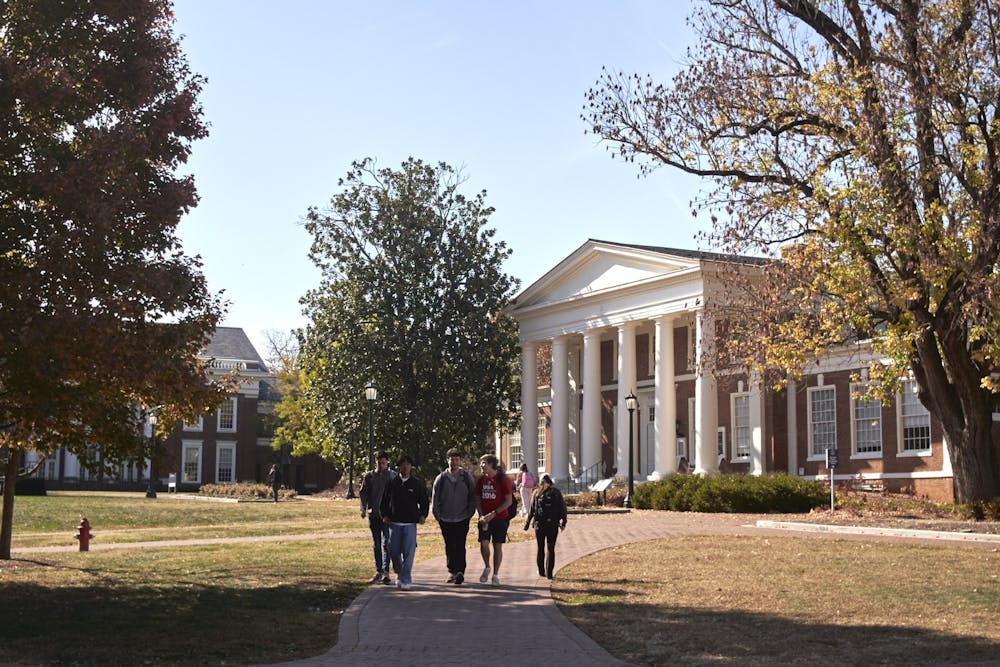The University received 42,093 early action and early decision applications for first-year admission to the Class of 2028, marking a 3.4 percent increase from the 40,713 early applications received for the Class of 2027. Applications — which were due by Nov. 1 — included 10,593 Virginians and 29,334 out-of-state applicants.
Although numbers are still unofficial, 37,665 of this year’s early applications were early action, a 3.3 percent increase from the 36,471 applications received for the Class of 2027. Early action applications are non-binding, meaning students are not required to attend the University after acceptance.
The University received 4,428 early decision applications, a 4.4 percent increase from 4,242 submitted last year. Unlike early action, early decision applications are binding if students are accepted to the University. The University revived the early decision application process in 2019, 13 years after the option was originally removed.
The University is also partnered with 62 Virginia high schools through the Virginia College Advising Corps, which aims to increase the number of underrepresented high school students in higher education. 1,085 students attending these high schools applied early to the University, a 22.5 percent increase from the previous year.
Overall, the number of applications from first-generation students decreased 2.1 percent this year, for a total of 4,671 applicants. The University defines first generation students as those without either parent or guardian receiving a four-year degree.
The University received applications from 3,883 Hispanic students, 7,489 Asian or Asian American students, 2,412 Black or African American students, 46 American Indian or Alaskan Native students, 33 Native Hawaiian or Pacific Islander students and 19,590 white students.
These statistics mark a 35.3 percent increase in American Indian or Alaskan Native student applications. The application pool also saw a 153.8 percent increase in applications from Native Hawaiian or Pacific Islander students — a total of 33 applied in this cycle compared to 13.
This year’s early application cycle also saw an 11.2 percent increase in Black applicants from last year, as well as a 3.1 percent increase in Asian and Asian-American applicants. The only marked decrease was with all-white students, which decreased by 0.9 percent. 2,380 of applicants identified with two or more races, and 2,670 did not disclose their race or ethnicity.
Greg Roberts, the associate vice provost for enrollment and undergraduate admission, said the University participated in over 500 separate recruitment events this fall.
“Given the changing landscape in higher education and our longstanding commitment to serve the citizens of the Commonwealth, this fall we significantly increased our recruitment outreach in the state of Virginia, in partnership with current students, alumni and colleagues across Grounds,” Roberts said.
The Supreme Court decision reversing affirmative action in June ended race-conscious admissions. In addition to changing application questions, the University responded by promoting outreach programs, including a partnership with the Office of African-American Affairs, Multicultural Student Affairs and other University departments for two Fall Fest events.
On their applications, students were able to self-identify races and ethnicities. Although the University allows applicants to select multiple races and ethnicities, the U.S. Department of Education regulations mandate that each student be included in only one group. Application readers will not have access to the self-disclosed “checkbox” information.
Of the five University schools to which students could apply, the School of Architecture received 956 applications, the School of Engineering and Applied Sciences received 8,023 and the College of Arts and Sciences received 30,823 — applications to all three schools increased by 6.2, 5.7 and 3.1 percent from last year, respectively.
Applications decreased from last year in the other two University’s schools. The School of Education and Human Development received 940 applications – a 0.5 percent decrease – while the School of Nursing had the largest decrease in applications from the last year, with 1,351 applications, or 1.4 percent less.
Early decision admission offers will be released by Dec. 15, and early action decisions will be announced by Feb. 15. Last year, the University extended offers to 16 percent of early action applicants and accepted 24 percent of early decision applicants.
“We are excited and honored that so many seniors from around the world have placed their faith in us by submitting an early application to U.Va.,” said Roberts. “After participating in over 500 separate recruitment events this fall, we are eager to begin reading applications and getting to know the applicants.”
The deadline for regular decision applications is Jan. 5.







